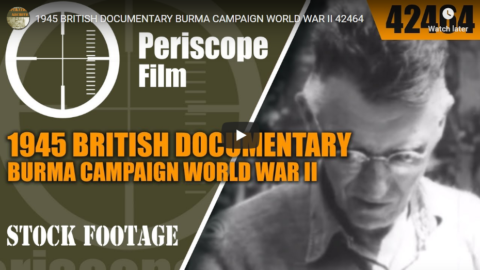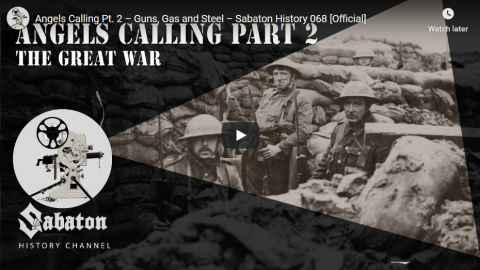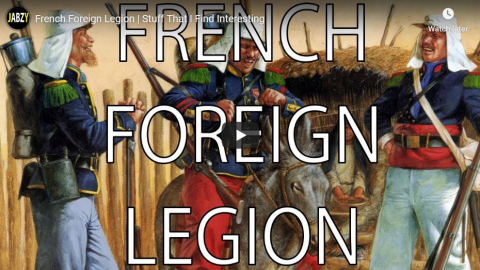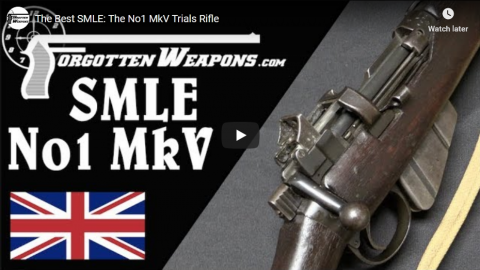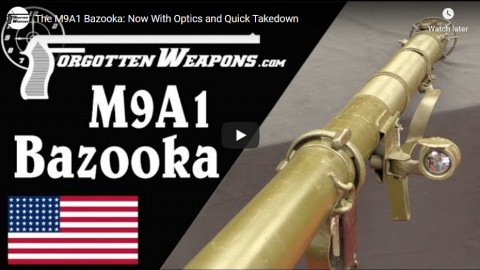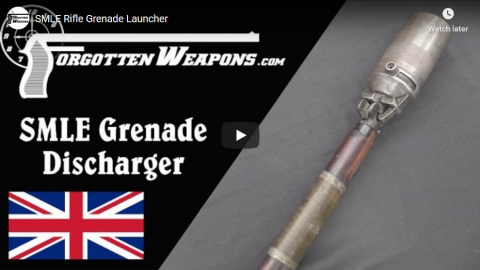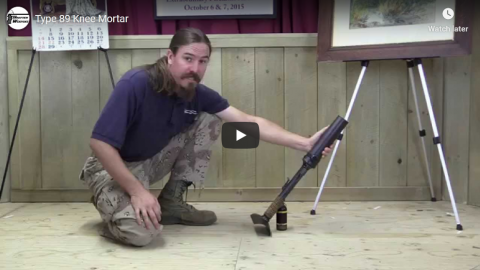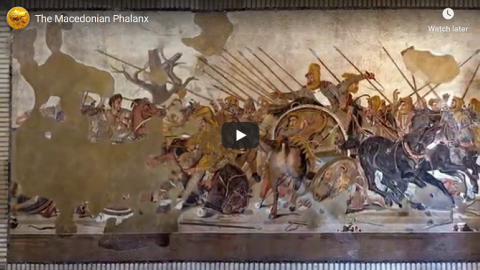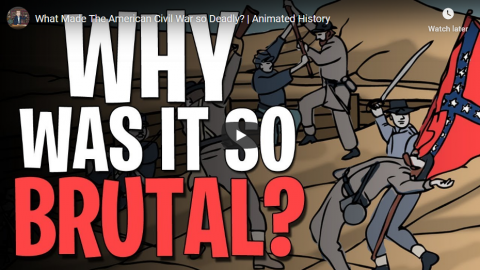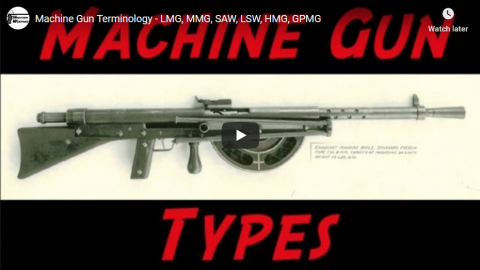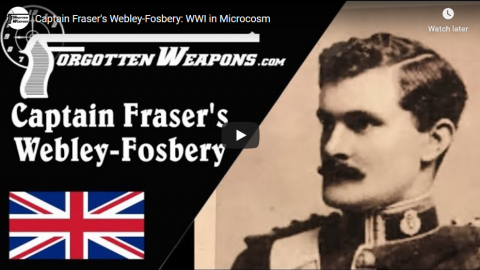PeriscopeFilm
Published 31 May 2016Support Our Channel: https://www.patreon.com/PeriscopeFilm
Made in 1945, BURMA VICTORY is a British documentary about the Burma Campaign during World War Two. It was directed by Roy Boulting. The introduction to the film outlines the geography and climate of Burma, and the extent of the Japanese conquests. The film then describes the establishment of the South East Asian Command (SEAC) under Mountbatten, “a born innovator and firm believer in the unorthodox”, and gives a comparatively detailed account of subsequent military events, including the Battle of Imphal-Kohima and Slim’s drive on Mandalay, Arakan landings, the northern offensive of the Americans and Chinese under Stilwell, and the roles played by Chindits and Merrill’s Marauders. The film ends with the capture of Rangoon and the Japanese surrender. The film focuses on the difficulties of climate, terrain, the endemic diseases of dysentery, malaria, etc., the vital role of air supplies, the shattering of the myth of Japanese invincibility and the secondary role of the Burma campaign in overall Allied strategy.
This film represents a British look at the campaign and was the pet project of Admiral Lord Louis Mountbatten, Supreme Allied Commander, South-East Asia, and he planned it as a joint Anglo-American production. But this scheme foundered over the inability of the U.S. leadership and British to agree on the main theme of the film. The British wanted it to concentrate on the drive southwards to liberate Burma. The Americans, anxious not to be seen to be participating in the restoration of the British Empire, wanted to emphasize the heroic building of the Ledo Road and the drive northwards to relieve the Chinese. In the end the two sides went their separate ways. The Americans produced the Ronald Reagan narrated film The Stilwell Road and the British made Burma Victory. It was the final production of the Army Film and Photographic Unit (AFPU) and was directed, like Desert Victory (1943), by Roy Boulting. Not released until after the war was over, it was hailed and promoted as “the real Burma film”.
The Burma Campaign in the South-East Asian theatre of World War II was fought primarily between the forces of the British Empire and China, with support from the United States, against the forces of the Empire of Japan, Thailand, and the Indian National Army. British Empire forces peaked at around 1,000,000 land, naval and air forces, and were drawn primarily from British India, with British Army forces (equivalent to 8 regular infantry divisions and 6 tank regiments), 100,000 East and West African colonial troops, and smaller numbers of land and air forces from several other Dominions and Colonies. The Burmese Independence Army was trained by the Japanese and spearheaded the initial attacks against British Empire forces.
The campaign had a number of notable features. The geographical characteristics of the region meant that factors like weather, disease and terrain had a major effect on operations. The lack of transport infrastructure placed an emphasis on military engineering and air transport to move and supply troops, and evacuate wounded. The campaign was also politically complex, with the British, the United States and the Chinese all having different strategic priorities.
South East Asia Command (SEAC) was the body set up to be in overall charge of Allied operations in the South-East Asian Theatre during World War II. Admiral Lord Louis Mountbatten served as Supreme Allied Commander of the South East Asia Command from October 1943 through the disbandment of SEAC in 1946.
This film is part of the Periscope Film LLC archive, one of the largest historic military, transportation, and aviation stock footage collections in the USA. Entirely film backed, this material is available for licensing in 24p HD and 2k. For more information visit http://www.PeriscopeFilm.com
June 21, 2020
Burma Victory (1945)
June 20, 2020
Two books on WW2 – which is the memoir and which the novel?
Lindybeige
Published 4 Mar 2018Two books I have read recently. When is a book a memoir and when is it a novel? WW2 from two different perspectives.
Support me on Patreon: https://www.patreon.com/Lindybeige
The books:
From the City, From the Plough by Alexander Baron (Bernstein)
The Last Panther by Wolfgang Faust (Chris Ziedler)Buy the music – the music played at the end of my videos is now available here: https://lindybeige.bandcamp.com/track…
Lindybeige: a channel of archaeology, ancient and medieval warfare, rants, swing dance, travelogues, evolution, and whatever else occurs to me to make.
▼ Follow me…
Twitter: https://twitter.com/Lindybeige I may have some drivel to contribute to the Twittersphere, plus you get notice of uploads.
website: http://www.LloydianAspects.co.uk
May 28, 2020
Why Halftracks? Why limited to WW2 only? (Featuring Tank Fest 2018)
Military History not Visualized
Published 6 Jul 2018Disclaimer: I was invited to Tank Fest by the Tank Museum.
Why were half-tracks used in the first place? Why not trucks, fully-tracked vehicles or something else? Also, why after the Second World War did the half-track disappear? Why were there no new types produced by major powers?
Big thank you to green_goblin_z for sending me 2 books from my amazon wishlist!
»» SUPPORT MHV ««
» patreon – https://www.patreon.com/mhv
» paypal donation – https://www.paypal.com/cgi-bin/webscr…»» MERCHANDISE – SPOILS OF WAR ««
» shop – https://www.redbubble.com/people/mhvi…Military History not Visualized is a support channel to Military History Visualized with a focus personal accounts, answering questions that arose on the main channel and showcasing events like visiting museums, using equipment or military hardware.
» SOURCES «
Spielberger, Walter; Doyle, Hilary Lous, Jentz, Thomas L.: Halbkettenfahrzeuge des deutschen Heeres
Spielberger: Halftracked Vehicles of the German Army 1909-1945 (Spielberger German Armor and Military Vehicle)Zaloga, Steven J.: M3 Infantry Half-Track. 1940-73. Osprey Publishing: Oxford, UK (1992 / 2002).
Citino, Robert M.: The German Way of War. From the Thirty Years’ War to the Third Reich. University Press of Kansas: USA, 2005.
Krapke, Paul-Werner: Armor, in: Margiotta, Franklin D. (Executive Editor): Brassey’s Encyclopedia of Land Forces and Warfare. Brassey’s: Washington, USA (1996), p. 42-53
Pöhlmann, Markus: Der Panzer und die Mechanisierung des Krieges: Eine deutsche Geschichte 1890 bis 1945 (Zeitalter der Weltkriege)
Munzel, Oskar: Die deutschen gepanzerten Truppen bis 1945
Fleischer, Wolfgang: Die motorisierten Schützen und Panzergrenadiere des deutschen Heeres: 1935-1945 – Waffen, Fahrzeuge, Gliederung, Einsätze
Felberbauer, Franz: Waffentechnik I – Band 2: Geschütze, Waffen in Entwicklung, Nichttödliche Waffensysteme, Ballistik, Physikalische Grundlagen (Truppendienst)
https://www.truppendienst.com/td-buec…
May 22, 2020
“Angels Calling” Pt. 2 – Guns, Gas and Steel – Sabaton History 068 [Official]
Sabaton History
Published 21 May 2020The shadow of trench warfare is a long one. In fact the soldiers at the front did not just rely on their guns and grenades alone, but on a wartime industry to keep them fighting. Everything had to be produced in the millions. Not only rifles, cartridges and shells, but boots, helmets, spades and everything else that was used on a daily basis. The Great War was a war that thrived on a nation-wide war-economy, the likes of which had never been seen or tried before.
We would like to thank the World of Tanks team for their contribution and help with the video filming. If you’re not yet a World of Tanks player, join the game and get your hands on cool in-game stuff for free via the link: https://redir.wargaming.net/w7fwclmx/…
Support Sabaton History on Patreon: https://www.patreon.com/sabatonhistory
Listen to “Angels Calling” on the album Attero Dominatus:
CD: http://bit.ly/AtteroDominatusStore
Spotify: http://bit.ly/AtteroDominatusSpotify
Apple Music: http://bit.ly/AtteroDominatusAppleMusic
iTunes: http://bit.ly/AtteroDominatusiTunes
Amazon: http://bit.ly/AtteroDominatusAmzn
Google Play: http://bit.ly/AtteroDominatusGooglePlay
Drücken Sie zum Aktivieren des Screenreaders ⌘+Wahltaste+Z. Informationen zu Tastaturkürzeln erhalten Sie, indem Sie ⌘Schrägstrich drücken.Watch the Official Video of “Angels Calling” here:
https://www.youtube.com/watch?v=JyZ8w…Check out the trailer for Sabaton’s new album The Great War right here: https://www.youtube.com/watch?v=HCZP1…
Listen to Sabaton on Spotify: http://smarturl.it/SabatonSpotify
Official Sabaton Merchandise Shop: http://bit.ly/SabatonOfficialShopHosted by: Indy Neidell
Written by: Markus Linke and Indy Neidell
Directed by: Astrid Deinhard and Wieke Kapteijns
Produced by: Pär Sundström, Astrid Deinhard and Spartacus Olsson
Creative Producer: Joram Appel
Executive Producers: Pär Sundström, Joakim Broden, Tomas Sunmo, Indy Neidell, Astrid Deinhard, and Spartacus Olsson
Post-Production Director: Wieke Kapteijns
Edited by: Karolina Dołęga
Sound Editing by: Marek Kaminski
Maps by: Eastory – https://www.youtube.com/c/eastoryArchive by: Reuters/Screenocean https://www.screenocean.com
Music by Sabaton.Sources:
Imperial War Museum: (E(AUS) 1497),(Q 87945), (HU_91107), (Q 109611), (IWM Q 3001), (Q 69229), (Q 14945), (Q 5855), (Q 110355), (Q30009), (Q 9340), (Q 10450), (Q 70680)
Bundesarchive
National Archives NARA
Library of Scotland
Internet Archive Book Images
Bulgarian Archive State Agency
The icons from Noun Project by: Creative Mania, Chanut is Industries, Ben Davis, Vichanon Chaimsuk, Assyifa Art, chiccabubble, Nociconist, Vectors Marke, lastspark, faisal, Nun, Setyo Ari Wibowo, Mohamad Arif Prasetyo, Nibras@design,Creative Stall, Bruno Bosse, ghufronagustian, Karla Design,Gan Khoon Lay, Eucalyp, Anton, Marta Botter, Iconic, Daniel Turner, Naufal Hudallah, Phạm Thanh Lộc, Ruben Vh, Vectorstall, Icon Lauk, Mahmure Alp, Luke Anthony, Deemak Daksina, Sergey Krivoy, Andrejs Kirma, Rflor, Andrejs Kirma, Shovel by David, ProSymbols, Jake Dunham, noSimon Child, Wonmo Kang, Nubaia Karim Barsha, Nikita Kozin, Dolly Holmes, Collicon, Made by Made & Graphic Enginer
Flag of Spain recreated by HansenBCN and SanchoPanzaXXIAn OnLion Entertainment GmbH and Raging Beaver Publishing AB co-Production.
© Raging Beaver Publishing AB, 2019 – all rights reserved.
May 4, 2020
The No 4, Mk I* Lee-Enfield: Introduction
britishmuzzleloaders
Published 21 Aug 2018If you would like to support the Channel you can do so through our Patreon Page.
https://www.patreon.com/britishmuzzle…Errata –
The labelling of the “wrongly stamped” Mk III sight should be better described as “confusingly stamped” … the designation refers to the leaf …It should be clarified that the rifle has at some point spent time in India with resultant modifications and maintenance…
Also, as of the 1937 Manual, the safety catch should be applied with the forefinger of the right hand.
For your Martini and Snider needs email Martyn at xringservices@yahoo.com
And for further reading on all British Victorian (and earlier) arms stop by the British Militaria Forum and say hello. http://britishmilitariaforums.yuku.com
April 19, 2020
French Foreign Legion | Stuff That I Find Interesting
Jabzy
Published 14 Oct 2017
March 27, 2020
The Best SMLE: The No1 MkV Trials Rifle
Forgotten Weapons
Published 18 Nov 2019After World War One, the British looked at how to apply the lessons of the war to development of a new infantry rifle. Even before the war, a decision had been made to move to an aperture type rear sight — which would have been used on the Pattern 1913 Enfield, had the war no interrupted adoption of that model. So after the war, trials were made on some MkIII SMLE rifles refitted with rear aperture sights. These trials were successful enough to justify production of a substantial number of rifles for troop trials. This would be designated the No1 MkV rifle, and 20,000 of them were made between 1922 and 1924.
The magazine cutoff was retained in the MkV rifles, as were the volley sights in the initial production — along with an aperture rear sight marked out to 1500 yards. Following concerns about the durability of the sight and its adjustment latch, it was redesigned slightly, and the new version only went out to 1400 yards. On this second variation, the volley sights were omitted.
The new rifles was taken to Bisley and input was sought from both military units and civilian marksmen from the British NRA. The feedback that was received was that the sight was too fragile, its adjustments were too coarse, and the barrel was too light. These changes were implemented in the No1 MkVI rifle which would ultimately be adopted as the N4 MkI; the classic World War 2 version oft he Lee Enfield.
http://www.patreon.com/ForgottenWeapons
Cool Forgotten Weapons merch! http://shop.bbtv.com/collections/forg…
Contact:
Forgotten Weapons
6281 N. Oracle #36270
Tucson, AZ 85704
March 21, 2020
The M9A1 Bazooka: Now With Optics and Quick Takedown
Forgotten Weapons
Published 18 Aug 2018Sold for $7,475
http://www.patreon.com/ForgottenWeapons
Cool Forgotten Weapons merch! http://shop.bbtv.com/collections/forg…
The Bazooka — or rather the Launcher, Rocket, 2.36″, M1 — was introduced by the United States in 1942, the result of a fast development by two Army officers, Captain Leslie Skinner and Lt. Edward Uhl. The US had no infantry antitank weapon at that point, and it had become quite clear that such a thing was needed. The Bazooka offered a theoretical effective range of 300 yards, throwing a 1 pound hollow-charge projectile capable of penetrating 4 inches of armor plate. The 2.36 inch bore measurement, incidentally, was chosen as the inch equivalent of 60mm, to match the common mortar size.
In October of 1943, an improved M9 version was introduced, using a magnet firing system instead of the unreliable batteries of the original. A followup M9A1 variant was adopted in June of 1944, which broke down into two parts for easier transportation, and the T90 optical sight was added in September of 1944. These were effective weapons against armor early in the war, but the heavier tanks introduced late in the war were too heavily armored for the Bazooka to be very effective — although it remained a valuable tool for attacking pillboxes and other fortified positions. It would continue to see extensive service in the Korean War, although its limited armor penetration was particularly acute in that conflict.
Note that the inert M6 rocket in the video is not being sold with the Bazooka.
If you enjoy Forgotten Weapons, check out its sister channel, InRangeTV! http://www.youtube.com/InRangeTVShow
March 18, 2020
SMLE Rifle Grenade Launcher
Forgotten Weapons
Published 2 Feb 2017While rifle-launched grenades date back hundreds of years, they first came into widespread use during World War One, on all sides of the conflict. The first years of the war saw the use of rod grenades, but their downsides (mediocre accuracy, bulkiness, and a propensity to damage rifle bores) led to the British adopting a 2.5” cup grenade discharger in late 1917. This new launcher used slightly modified Mills bomb hand grenades, and could launch them with significant accuracy from 80 to 200 yards. They would become a staple of WWI combined arms infantry tactics, and be used clear through WW2 until replaced by the 22mm NATO style spigot grenades.
http://www.patreon.com/ForgottenWeapons
Cool Forgotten Weapons merch! http://shop.bbtv.com/collections/forg…
If you enjoy Forgotten Weapons, check out its sister channel, InRangeTV! http://www.youtube.com/InRangeTVShow
March 3, 2020
Type 89 Knee Mortar
Forgotten Weapons
Published 23 Sep 2015http://www.patreon.com/ForgottenWeapons
Hammer price: $2,500
The Type 89 grenade discharger, commonly known as the “knee mortar” was a Japanese light infantry weapon introduced in 1929 which blurs the lines between grenade launcher and mortar. Like a mortar, it fires propelled explosive bombs in a high-angle indirect fire role, but it has a rifled barrel and uses a range adjustment mechanism very different from most mortars.
The knee mortar proved to be a very capable and effective weapon in WWII against US forces. It was accurate, effective, and perhaps most importantly, light and very fast to put into action. The closest comparable US weapon was the 60mm light mortar, which had a more effective projectile but was significantly slower to use.
Of course, the “knee mortar” nickname was based on the theoretical belief that one was supposed to rest the curved baseplate of the weapon on a leg while firing, which would actually have resulted in a broken leg. The baseplate was curved to allow it to dig into soft soil and be used against objects like logs and roots.
February 4, 2020
The Macedonian Phalanx
HistoryMatters
Published 30 Jan 2016A short introduction to the Macedonian phalanx, from conception to demise.
January 7, 2020
What Made The American Civil War So Deadly? | Animated History
The Armchair Historian
Published 20 Jul 2018Check out EmperorTigerStar’s video: https://www.youtube.com/watch?v=8j1sJ…
What Made The American Civil War So Deadly?
Sign up for The Armchair Historian website today:
https://www.thearmchairhistorian.com/Our Twitter: https://twitter.com/ArmchairHist
The Great Courses Plus is currently available to watch through a web browser to almost anyone in the world and optimized for the US, UK and Australian market. The Great Courses Plus is currently working to both optimize the product globally and accept credit card payments globally.
Sources:
Battle Cry of Freedom: The Civil War Era ~ James M. McPherson
The American War: A History of the Civil War Era ~ Gary W. Gallagher
http://www.digitalhistory.uh.edu/disp…
https://blogs.ancestry.com/cm/12-stun…
https://www.battlefields.org/learn/ar…
January 6, 2020
Macedonian Battle Tactics
Historia Civilis
Published 5 Jul 2017Patreon | http://patreon.com/HistoriaCivilis
Donate | http://www.paypal.com/cgi-bin/webscr?…
Merch | http://teespring.com/stores/historiac…
Twitter | http://twitter.com/HistoriaCivilis
Website | http://historiacivilis.comSources:
Parallel Lives, by Plutarch: http://amzn.to/2sOfr4O
Alexander of Macedon, by Peter Green: http://amzn.to/2rMJqpn
Alexander the Great, by Robin Lane Fox: http://amzn.to/2sOKqh3
Ghost on the Throne, by James Romm: http://amzn.to/2tpuNxqWe are a participant in the Amazon Services LLC Associates Program, an affiliate advertising program designed to provide a means for us to earn fees by linking to Amazon.com and affiliated sites.
Music:
“Seeing the Future,” by Dexter Britain
“Infados,” by Kevin MacLeod
“Drums of the Deep,” by Kevin MacLeod
“Hallon,” by Christian Bjoerklund
December 19, 2019
Machine Gun Terminology – LMG, MMG, SAW, LSW, HMG, GPMG
Forgotten Weapons
Published 29 Dec 2017http://www.patreon.com/ForgottenWeapons
Cool Forgotten Weapons merch! http://shop.bbtv.com/collections/forg…
Today we will look at the various different categories of machine guns — what makes them, why they exist, and what their place in military history is. Specifically …
Automatic Rifle: Shoulder or hip fired, limited magazine capacity, minimal sustained fire capacity. Examples: M1918 BAR, Chauchat.
LMG: Magazine fed, rifle caliber, bipod fired. Examples: Bren, Madsen, Lewis.
HMG: Belt fed, usually water cooled, minimal portability, fired from tripod only. Examples: Maxim, Vickers, Hotchkiss 1914. Evolved into guns of caliber 12.7mm – 20mm, like the M2 and DShK.
MMG: Air cooled, tripod fired only, belt fed. Examples: Browning 1919A4, SG-43.
GPMG: Bipod or tripod fired, belt fed, rifle caliber, quick-change barrel. Examples: MG42, PKM, M240.
SAW/LSW: Intermediate caliber, magazine fed, bipod fired. Examples: L86A1, FN Minimi, RPK.
If you enjoy Forgotten Weapons, check out its sister channel, InRangeTV! http://www.youtube.com/InRangeTVShow
December 16, 2019
Captain Fraser’s Webley-Fosbery: WWI in Microcosm
Forgotten Weapons
Published 23 Dec 2017http://www.patreon.com/ForgottenWeapons
Cool Forgotten Weapons merchandise! http://shop.bbtv.com/collections/forg…
Captain Percy Fraser, DSO was born on January 22, 1879 and died in Ypres on the night of February 23, 1915 while attempting to aid men wounded outside their trench. His unit of the Queen’s Own Cameron Highlanders would suffer horrendous casualties at Ypres, and today we will look at his Webley-Fosbery automatic revolver and his service in the British Army.
Thanks to Mike Carrick of Arms Heritage magazine for sharing Captain Fraser’s story and revolver. See his regular column here: https://armsheritagemagazine.com
If you enjoy Forgotten Weapons, check out its sister channel, InRangeTV! http://www.youtube.com/InRangeTVShow

